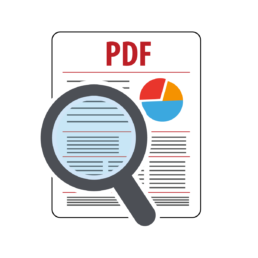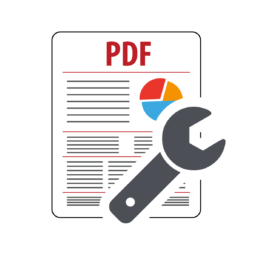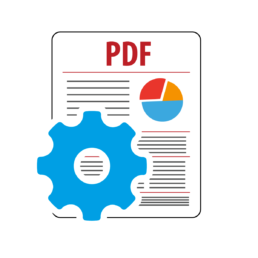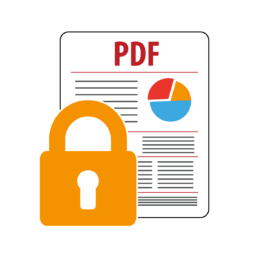4 Reasons PDF Should Be Your Workflow Print Language for the Future

Selecting a print language for your workflow might not actually be a choice you made. With the history of print for customer communications—or transactional documents as many would know it—there is a history of why many organizations utilize specific print languages in their production floor operations.
Some started out as Xerox shops, so they have built an infrastructure on Metacode; others might have jumped in with IBM and gone with the Advanced Function Presentation or AFP route. For many the legacy composition systems of the past, coupled with the expertise that was in-house drove the evolution of the production printing process, and ultimately the workflow established for Customer Communications Management.
As you and your teams look at the future, why should you change from Metacode, AFP or other languages like PCL and PostScript? Solimar Systems believes there are significant benefits to moving your print and electronic communication workflows to a PDF-driven process. Consider these 4 reasons why we believe you will get the most benefit from PDF as your “go to” print stream:
1PDF is Page Independent

What is the value of page independence in your print file format? The ability to efficiently search, find, manipulate and render content. With PDF, you have a full table of contents that points not just to each page, but the objects that make up the resources and contents of that page. In many other file formats, you have to sequentially process the file to find such information. The difference between PDF and other content formats is like the difference between a thumb drive and a tape drive. Which would you rather have? As users seek to render increasingly sophisticated documents, page independence and the ability to process in parallel becomes significantly more important. This is especially true as high-speed inkjet printing continues to grow in market share and production shops look to keep their inkjet engines running at rated speed.

2Lots of Tools to Choose From
An area that is often overlooked when considering a workflow print language are the number of tools that are available to view and analyze the print stream. With AFP, Metacode, PCL and PostScript, there are relatively few tools available to just view the print stream; and the ones out there are typically for pay. PDF has become a universal format for electronic viewing, which means there are many free tools that can be used to view PDF. Moreover, there are many tools out there that can help analyze, correct, and even recompose PDFs making it one of the most flexible file formats in use today.
3Supports Evolving Innovation

While being able to handle today’s print needs is of the utmost importance, you should also have your eye on the future. The print marketplace continues to evolve with new innovative print solutions for electronic delivery, mobile apps, accessibility and packaging being introduced regularly. Currently, no other format except PDF can support the wide array of innovations in the customer communications and experience landscape; it and HTML5 are positioned to rule the future of communications delivery and interaction. Moreover, PDF can easily be translated into HTML5 for a dynamic web and mobile experience while also providing the ability to deliver accessible communications. Also important, the recent PDF 2.0 standard embraces the use of “Document Part Metadata”, endorsed by CIP4 (the JDF/JMF workflow advocacy) to define finishing, which can already be seen in the market with inline finishing capability applications such as FreeFlow Print Server 9 and the HP inkjet press. PDF is literally everywhere, and is likely the only print format that younger generations know. We interact with PDFs for archived bills and letters, insurance cards and, even, movie tickets. PDF has become so commonplace that it makes sense to use PDF as your base workflow. With PDF you can open doors to new markets while making it easy for other departments to leverage the printable content you create for a superior customer experience

4Encryption Available
Another benefit of a PDF workflow is the ability to encrypt documents within a production print stream run. In today’s digital world, we know that keeping sensitive and personal information is not just important, but required. Traditional print streams such as AFP don’t offer the ability to encrypt, which means you must take additional precautions and additional business risk. For growth organizations, cutting this risk and being able to add another layer of security represents high-value and another reason to move to PDF as the de facto workflow print data language.
These 4 reasons are why now is the time to start reviewing your current workflow, its shortcomings and how your organization should be shifting to a more modern and capable workflow driven by PDF. Remember, shifting to a PDF-centric workflow doesn’t mean giving up traditional formats; you can still take in an AFP or Metacode file, but instead of using it as your preferred workflow print language, let our experts at Solimar Systems show you the power of transforming to PDF and then distributing through an omnichannel strategy.
Contact Solimar today and let our experts help you define your workflow of the future. You can also tweet us on twitter via @SolimarSystems. We also invite you to read our case studies—all with named and referenced customers—to see how Solimar partners with our clients for significant results and success.
For more information, call the Solimar Sales Team at +1.619.849.2800.
